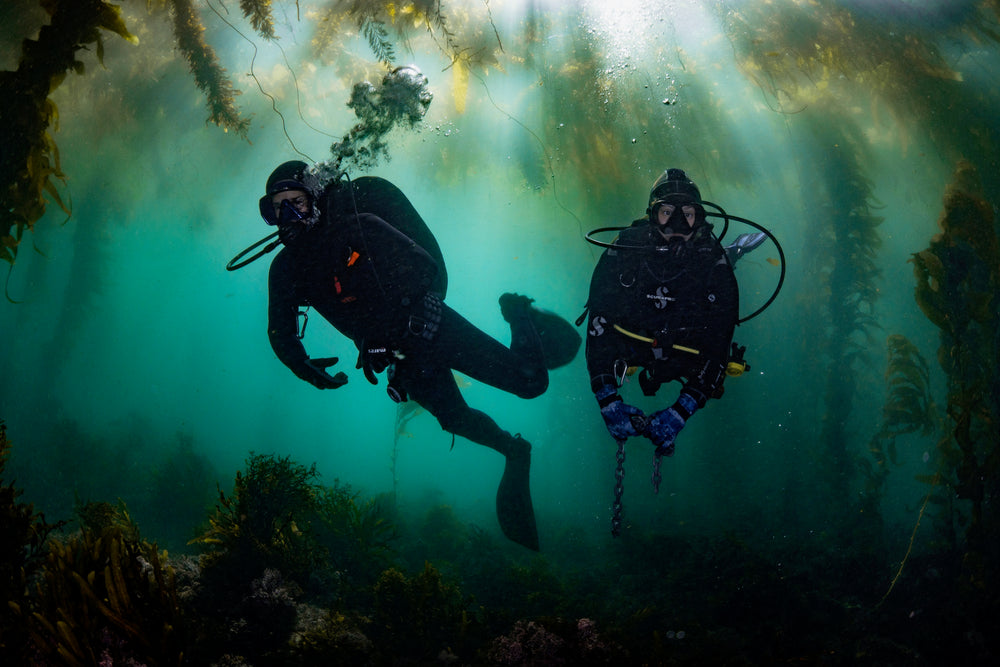
Giant Kelp Forest Regeneration
Kelp Ecosystems in California are in a state of crisis. In the last 10 years, more than 85% of Southern California's Giant Kelp forests have been devastated. Similarly, in Northern California, almost 95% of the Bull Kelp forests have disappeared. The primary cause behind this devastation is the overabundance of purple sea urchins - whose population has proliferated due to the disappearance of their natural predator - the sea otter. This chain of challenges serves as a concerning illustration of how human impacts and climate change can profoundly impact the health of ecosystems.
Clearing "urchin barrens" allows rapidly growing kelp to regrow and re-establish into a healthy kelp forest - creating habitat for marine life and sequestering carbon emissions.
The latest science shows that globally, kelp forests can sequester more carbon than mangrove forests - restoring these sequoias of the sea is critical to solving climate change.
*Thanks to the support of our generous brand partners, this project has been fully funded.
How this project works:
The Problem - Urchin Barrens
Sea urchins play a role in a healthy kelp forest, but can proliferate and create "barrens" where kelp cannot grow. These barrens are essentially permanent until they are removed.
The Solution- Divers clear urchin barrens
When the urchins are removed, kelp can quickly grow back to its prior extent. Other urchin predators (fish, lobsters) can then keep the population in control.
The fastest growing organism
In ideal conditions, Giant Kelp grows approximately 1 foot per day - and can grow up to 2 feet per day! Kelp forests provide habitat and food for over 700 species of algae, invertebrates, and fish.
Kelp biomass often floats into the deep ocean, where it sinks. Each year, 10% of kelp primary productivity is permanently sequestered.

The Bay Foundation
SeaTrees has partnered with The Bay Foundation to regenerate kelp forests in Southern California.
In partnership with The Bay Foundation, we've restored more than 450,000sq ft of Giant Kelp forest.
Divers identify purple urchin barrens + teams are sent to clear these areas. The Bay Foundation then monitor the progress of the site as the kelp ecosystem reestablishes itself.
Explore the project at White Point

Sustainable Development Goals addressed by the project.
Key Impact Metrics
- 700+ species protected
- One day of work restores 1,000 sq-ft kelp forest
- Abalone species reintroduced to kelp forest
- Within 5 years**, restored kelp forest ecosystems indistinguishable from healthy kelp forest ecosystem

Gender Equality
UNESCO reports women are underrepresented in marine sciences. As of 2018, men make up an estimated 75% of ocean science researchers globally.
The Bay Foundation project in Palos Verdes is moving the needle as a female-led kelp restoration project managed by Heather Burdick. They are committed to supporting women’s contributions to the sector by adhering to a 50/50 gender hiring policy.
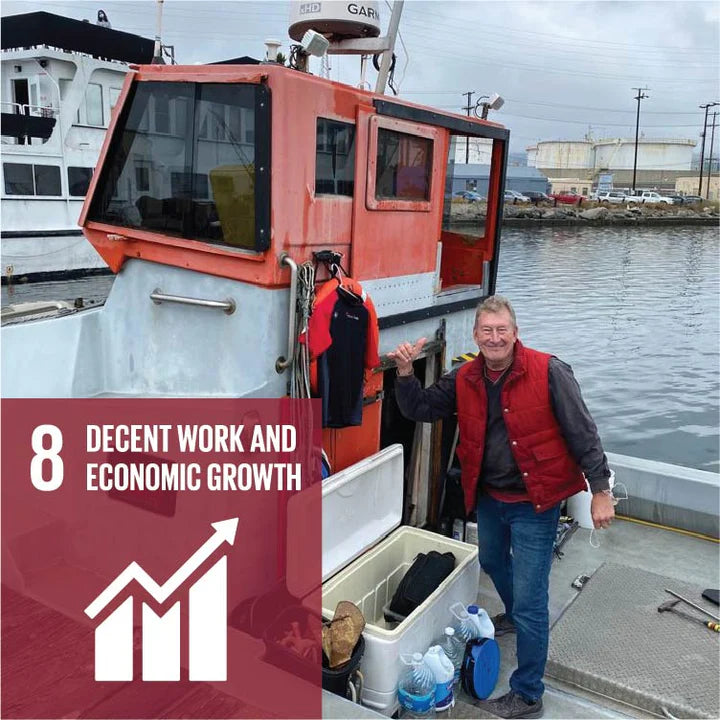
Decent Work and Economic Growth
White Point is historically an extremely productive fishing location. The lack of healthy kelp forests in recent decades has decimated the fishing industry opportunities in the area.
Through this project, local fishermen are employed to smash urchin barrens, a critical step in clearing the way for healthy kelp forest regeneration. The Bay Foundation team has also observed an increase in fishing activity in nearby areas where kelp forests have been restored.
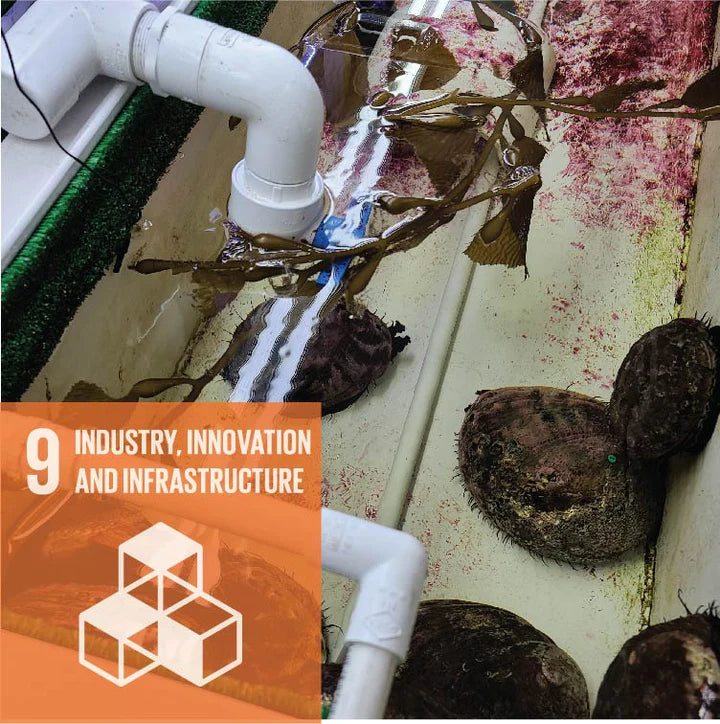
Industry, Innovation and Infrastructure
The Bay Foundation’s work in Palos Verdes is on the cutting edge of kelp restoration technology. One technique that The Bay Foundation uses to ensure long-term survival of restored kelp forests is raising juvenile abalone.
Abalone, which feed on kelp, are already scarce in the wild, and their numbers have continued to decline as kelp forests diminish in Palos Verdes. The Bay Foundation team is raising abalone in their lab that will be reintroduced to the restored kelp forests, serving as competitors to urchins and keeping the kelp forests healthy.
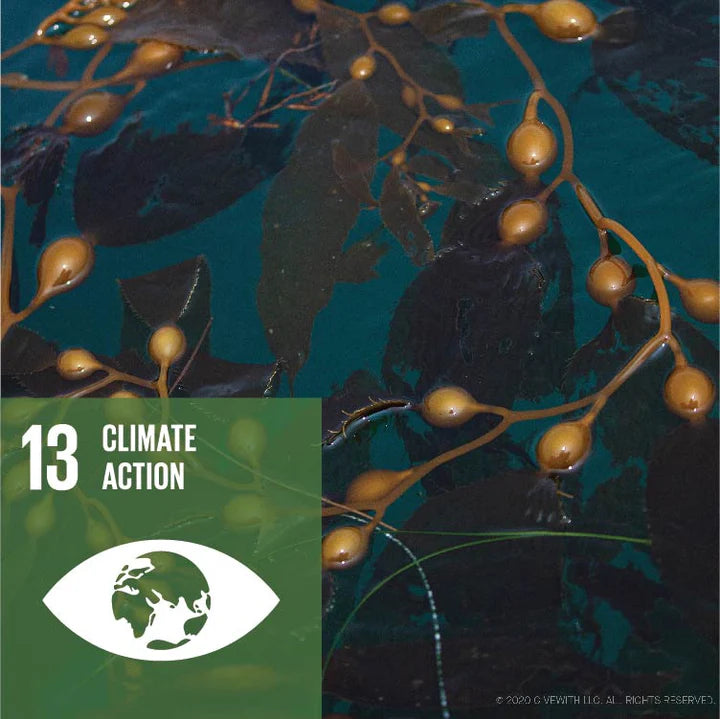
Climate Action
Kelp forests play an important role in sequestering CO2 around the world. Globally, kelp forests sequester as much CO2 as the worlds mangrove forests.
Over the course of the project, The Bay Foundation and SeaTrees will restore 21 hectares of kelp forest off of Palos Verdes. This will permanently sequester 83 tons of CO2 every year.
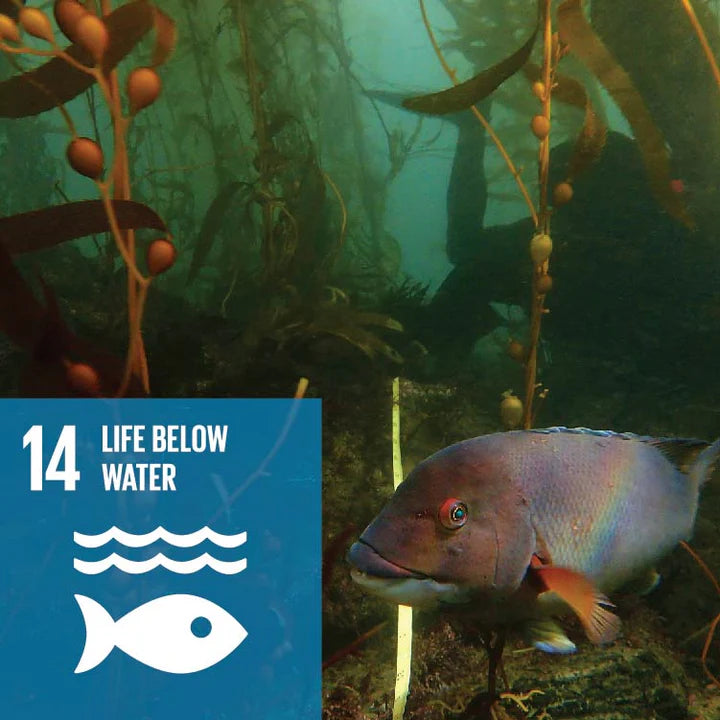
Life Below Water
Coastal ecosystem restoration is critical to the long-term living conditions of Southern California. For decades, the waters of Los Angeles have been filled with pollutants, decimating marine flora and fauna.
The Bay Foundation has found a 250% increase in kelp canopy extent in the project restoration areas, protecting over 700 species in the restored kelp forest off of Palos Verdes.


